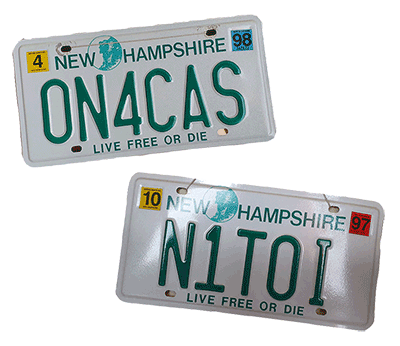From ONL4003 to ON4CAS
Before I got my license back in 1994, I enjoyed more than a decade of SWLing (Short Wave Listening). I soon found out that monitoring the amateur radio bands was much more exciting than listening to the propaganda international broadcasting were transmitting. The Belgian IARU society UBA attributed me the SWL sign ONL4003. I did all those things many licensed amateurs did: collecting confirmation (QSL) cards, chasing DX (long distance) stations, taking part in contests and achieving operational awards. Over 30,000 QSL cards confirming my reception reports were packed together in shoe boxes.

Having never studied electronics at school, I was convinced the licensing exam would be an insurmountable burden. For more than a decade, I didn’t give it much thought as I had a great time as ONL4003.
It must have been springtime 1994 when I coincidentally got myself a copy of the “Now You’re Talking” textbook of the American Radio Relay League ARRL. Even for someone who hardly knew Ohm’s Law, the theory seemed rather elementary. The manual explained foreigners were entitled to obtain an American transmitting license. It didn’t take long before I attended an exam session at the American Airforce Base in Bitburg, Germany. Soon after, I received my Technician License with a Certificate of Succesful Completion of Examination (CSCE) for the written part of the General test. A perfect incentive to practice and perfect my copying of morse code! I was granted the callsign N1TOI.
Fast forward: a few months later I upgraded to Advanced Class with another CSCE, this time for the 20 words per minute morse code test. The Amateur Extra theory was really difficult to master. My knowledge of electronics was rather limited, remember? I relentlessly kept studying and eventually achieved the highest possible grade of US amateur radio license.
Being a Belgian citizen, I did get reciprocal licenses based on my American license in several European countries, but not in my own country.
After studying all the theory for the several American license classes, I felt confident that I could manage the Belgian licensing exam as well. So, I concentrated on the legislation, bandplans, etc. which were different.
I was proud to pass the HAREC examination on the first attempt and I immediately signed up for the then compulsory telegraphy test which happened to be at a lower speed than for the Amateur Extra US license.
What once seemed a mission impossible became a mission accomplished. Just a few days before the 1995 edition of the CQ WW DX Telegraphy Contest I received my Belgian callsign ON4CAS. That weekend I immediately joined the action and made my very first 500 radio contacts. It was one of the biggest thrills in my life. Since then, over 200,000 contacts have filled up my log.
With great pleasure I can also tell you that my wife Else and our elder son also obtained an amateur license. Their call signs are ON3EBR and ON3DTU respectively.

Current Equipment
- HF: Icom 7610 & Icom IC756ProIII.
- VHF/UHF: Yaesu FT480R, Yaesu FT8800;
Handhelds: Icom ID52E & Anytone 878UVPlus2. - Openspot3 hotspot for DSTAR, C4FM & DMR
- Bencher BY1 Paddle
- MicroHam MicroKeyer
- Antennas: Cushcraft A3S + 40m addon, Cushcraft D3W (WARC), Kelemen 80, 40 en 160m wire antennas, Diamond X-300N (VHF/UHF).
- Yaesu G100SDX Rotor
- 12m rooftop tower.





Back when there was no vanity license plate in Belgium, a radio amateur friend of mine drove around in New Hampshire with my American and Belgian call signs….
After the license plates expired, they were given an honorable place on the wall of the shack.
In January 2004 I was elected to the A-1 Operator Club of the American Radio Relay League.

